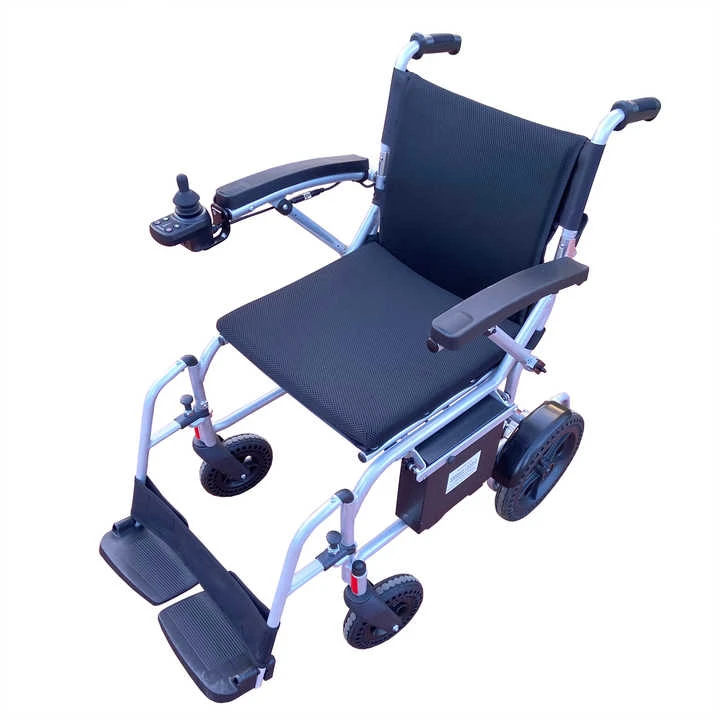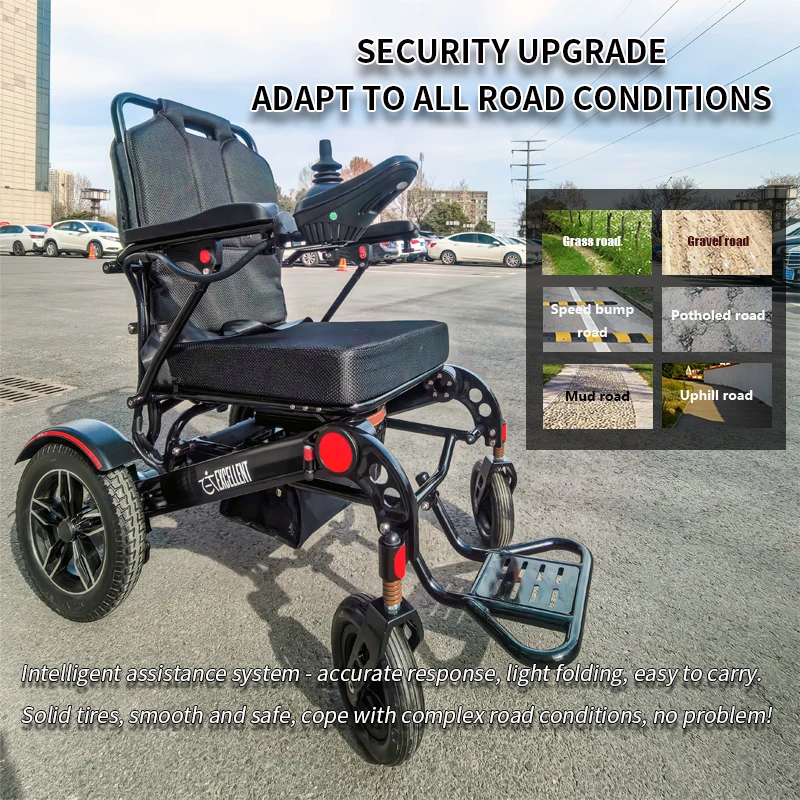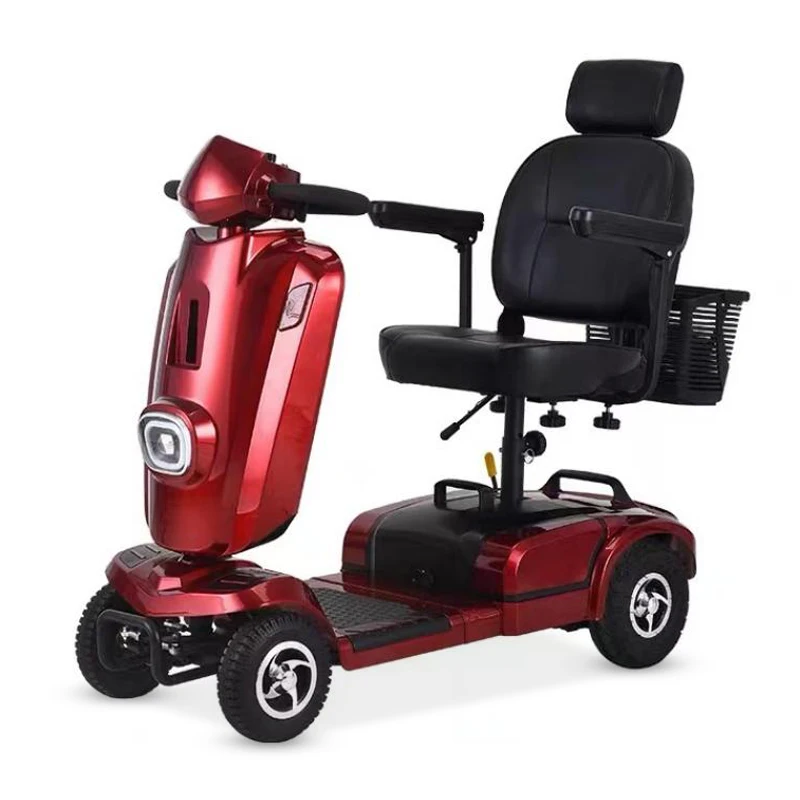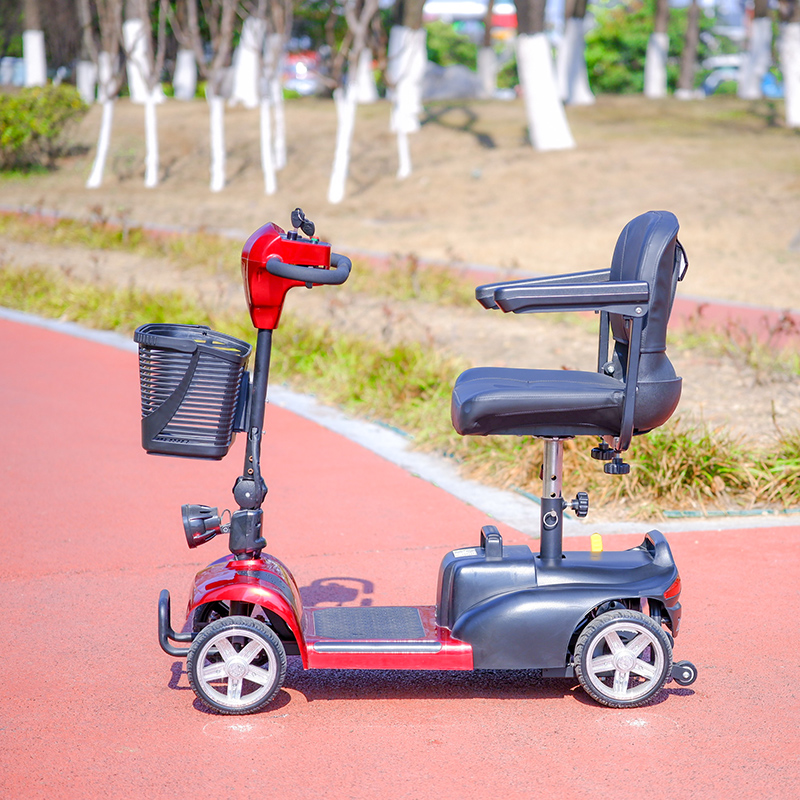Lightweight Foldable Electric Wheelchairs: Redefining B2B Mobility Solutions for Modern Healthcare and Hospitality
The global demand for lightweight foldable electric wheelchairs is surging, driven by aging populations, urbanization, and evolving accessibility standards. For B2B buyers—healthcare providers, hospitality brands, and logistics firms—these compact, motorized solutions offer a transformative blend of portability, durability, and cost efficiency. Below, we explore how integrating portable electric wheelchairs into commercial strategies can address institutional pain points while unlocking new revenue streams.

1. Market Drivers: Why Lightweight Mobility Matters
- Aging Demographics: Over 2.1 billion people globally will be aged 60+ by 2050 (WHO), with Asia-Pacific accounting for 60% of this growth. Nursing homes and hospitals require foldable wheelchair lightweight designs to optimize space and staff efficiency.
- Urbanization Pressures: Compact urban environments demand mobility aids that navigate tight spaces. Motorized wheelchairs with foldable frames reduce storage footprints by up to 40%, critical for hospitals and airports .
- Rental Economy Growth: Digitalized rental systems, like app-based platforms in China, process loans in 30 seconds, boosting utilization rates by 3–5×. Lightweight models are ideal for high-turnover rental fleets due to their compact size and repair-friendly designs .
2. Core Advantages of Modern Lightweight Wheelchair Solutions
- Space Optimization: Advanced folding mechanisms (e.g., telescopic handles, flat-pack designs) enable portable electric wheelchairs to collapse into dimensions smaller than 70×60×80 cm, ideal for trunk storage or airline cabins .
- Enhanced Safety: Electromagnetic braking systems and non-slip tires ensure stability on slopes (up to 6° inclines), while antimicrobial armrests meet healthcare hygiene standards .
- Battery Efficiency: Lithium-ion batteries with 20+ km range and 800+ charge cycles reduce downtime. Quick-release designs allow battery swaps in under 2 minutes, critical for 24/7 operations .
- Customization Flexibility: Modular platforms enable brands to add logos, adjust seat widths (40–60 cm), or integrate IoT sensors for usage tracking—key for hospitals and corporate wellness programs .
3. B2B Applications: From Hospitals to Luxury Hotels
- Healthcare Facilities:
- Narrow frames (91 cm turning radius) navigate ICU corridors, while foldable designs streamline patient transfers between wards.
- CE/ISO-certified models ensure compliance with medical device regulations, reducing liability risks .
- Hospitality & Retail:
- Silent motors (<45 dB) enhance guest experiences in hotels and malls.
- White-label branding allows resorts to offer premium mobility services, differentiating their offerings .
- Logistics & Travel:
- Airline-approved designs with detachable batteries simplify cross-border logistics.
- Stackable units (12 per pallet) cut warehousing costs by 30% compared to rigid wheelchairs .
4. Supply Chain & Operational Strategies
- Regional Manufacturing Hubs:
- China’s Guangdong and Jiangsu provinces produce 63% of mid-tier lightweight foldable electric wheelchairs, offering rapid production cycles (200,000 units/month) and competitive pricing .
- Emerging hubs in Vietnam and Mexico reduce lead times by 15–20% for North American and European buyers .
- Inventory Optimization:
- Stock 3 core models (urban, travel, premium) to cover 92% of B2B demand.
- Partner with suppliers offering cross-border compliance documentation (e.g., FDA, CE) to avoid delays .
5. Future-Proofing Your Mobility Portfolio
- Smart Fleet Management:
- IoT-enabled units transmit GPS and usage data, optimizing deployment and predictive maintenance.
- Geofencing ensures compliance in sensitive areas (e.g., airports, hospitals) .
- Sustainability Initiatives:
- Core charge programs for battery recycling reduce environmental impact.
- Remanufactured units offer 30–40% discounts, appealing to budget-conscious clients .
Conclusion
For B2B stakeholders, lightweight foldable electric wheelchairs are no longer optional—they’re essential for delivering scalable, compliant, and user-centric mobility solutions. By prioritizing modular designs, regional compliance, and data-driven fleet management, businesses can future-proof their offerings while boosting margins. As the market expands toward $42 billion by 2030 (Global Wellness Institute), early adopters will lead the mobility revolution.
Ready to integrate next-gen mobility into your portfolio? Partner with certified manufacturers today to unlock scalable
WhatsApp:+86 18951198876





.png)



